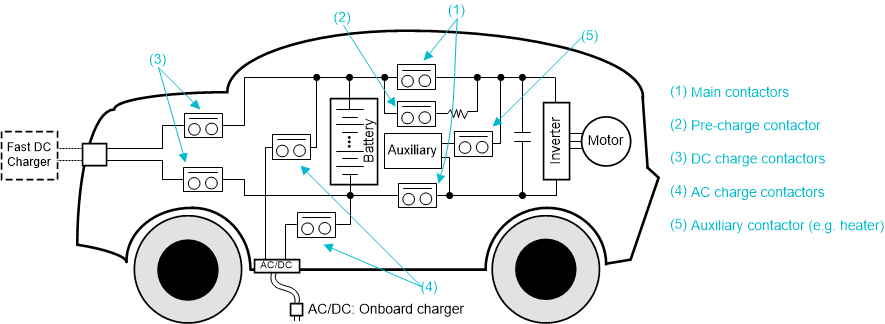SLVAF35A February 2021 – July 2024 DRV8714-Q1 , TPS2HB16-Q1
2 Contactors Distribution in EVs and HEVs
 Figure 2-1 Contactors Distribution in EV
and HEVs
Figure 2-1 Contactors Distribution in EV
and HEVsIn plug-in HEVs, a pair of additional AC charge contactors is inserted to establish a connection between the traction battery and the onboard charger. The onboard charger of the vehicle gets power from an AC charger, converts that AC power to DC to charge the battery.
For battery EVs, another pair of DC fast charge contactors is inserted to establish a connection between the traction battery and the DC fast-charge equipment. The DC fast charging is essential for long distance driving and large battery EV fleets. An auxiliary contactor like the electric heater for the passenger compartment is mandatory because there is no waste heat available from a combustion engine.
Main contactors, pre-charge contactors, and DC charge contactors are mostly located in the battery junction box (or battery disconnect unit). AC charge contactors are likely to be placed in the battery power distribution unit which is adjacent to the onboard charger.